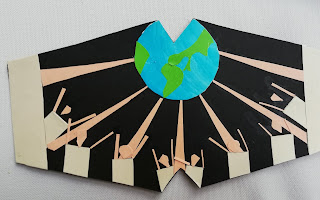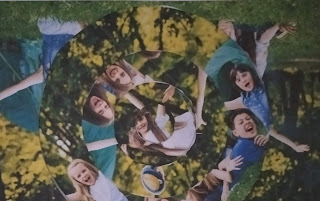Debes hacer primero el desarrollo geométrico del ejemplo y a continuación diseñar utilizando las aristas como ejes de simetría, redes modulares orgánicas. Dibuja formas naturales, flores, caras, etc..
Se trata de afianzar y repasar el tema de redes modulares pero a nivel espacial. Para ello, se dibujan 32 isósceles de base 8cm y lado 9 cm y se agrupan los isósceles en hileras de 4 en 4.
Deja volar tu imaginación repasando la geometría de 4º ESO.
 |
| paso 1 |
 |
| paso 2 |
 |
| paso 3 |
 |
| paso 4 |
SERGIO ZAMORA 4º E ESO
SARA LUQUE 4º E ESO

 |
| ELIA PÉREZ 4º E ESO |

































































